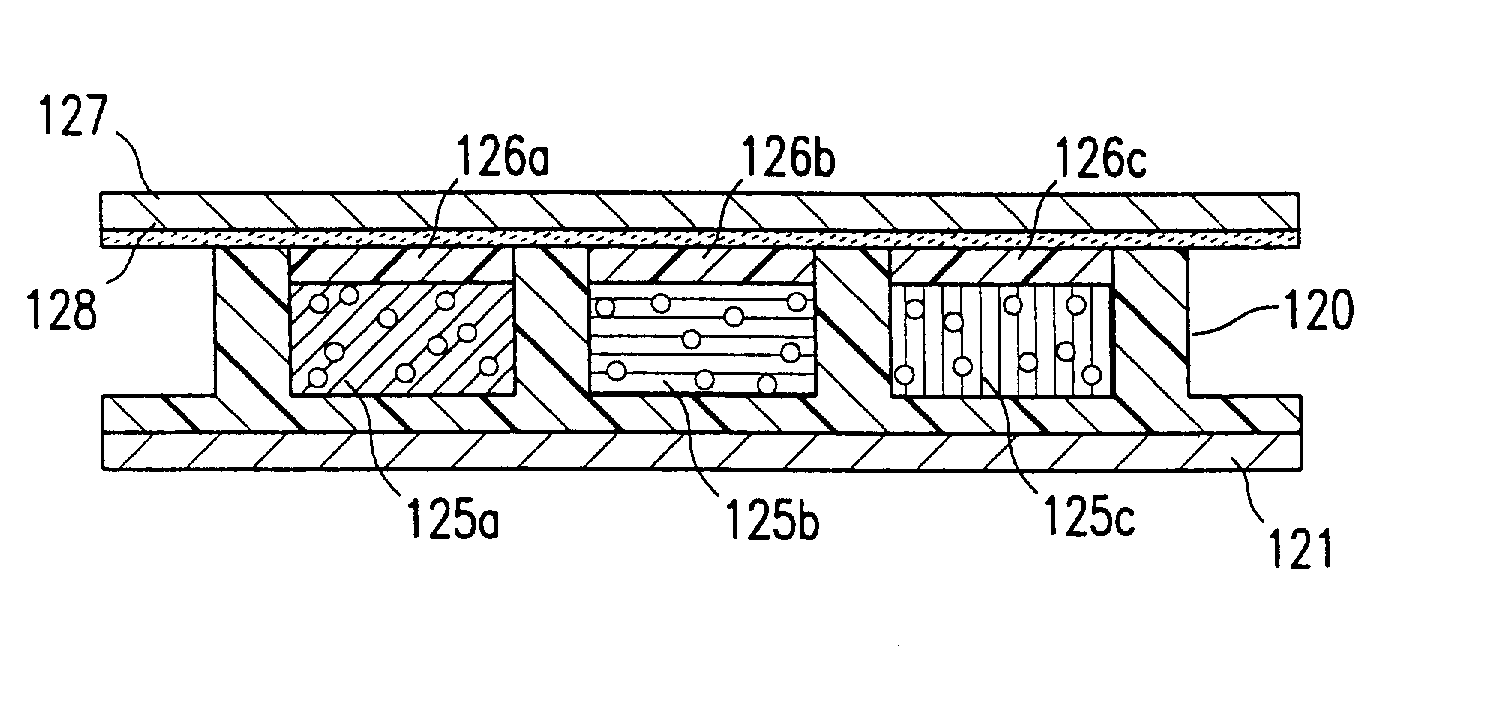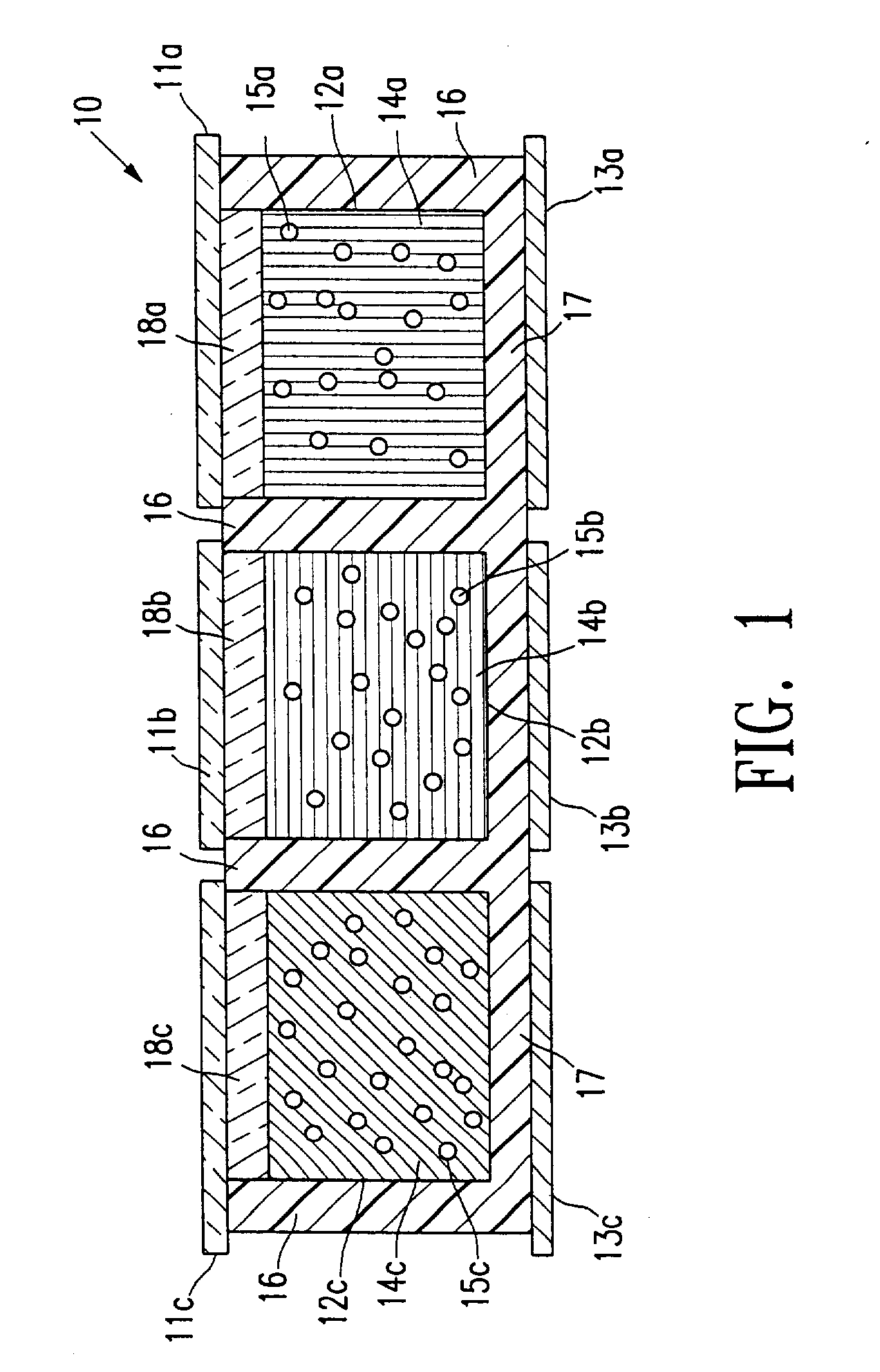Process for roll-to-roll manufacture of a display by synchronized photolithographic exposure on a substrate web
a technology of photolithographic exposure and substrate web, which is applied in the field of electrophoretic displays, can solve the problems of difficult to keep different colors of suspensions from each other in the partition-type electrophoretic display, and the production of electrophoretic displays by the microencapsulation process, and achieves the effects of low cost production, high volume and efficient and inexpensive production
- Summary
- Abstract
- Description
- Claims
- Application Information
AI Technical Summary
Benefits of technology
Problems solved by technology
Method used
Image
Examples
example 12
[0097] Example 12 Preparation Of The Radiation-Curable Cup Material. 12 Parts of Ebecryl 600 (UCB Chemicals, Smyrna, GA), 2.7 parts of Ebecryl 4827, 1 part of Ebecryl 1360, 6 parts of HDDA (UCB Chemicals), and 1 part of Irgacure 500 (Ciba Specialty Chemicals, Tarrytown, NY), were mixed homogeneously with 5 parts of methyl ethyl ketone (MEK). The solution was coated onto an ITO / PET film by Myrad bar with a target dry thickness of 50 microns. The coated sample was then exposed through a mask and developed with isopropanol.
[0098] Example 13 Preparation Of The Radiation-Curable Cup Material. The same as Example 12, except the formulation was replaced by 12 parts of Ebecryl 830, 5.5 parts of SR399 (Sartomer, Exton, PA), 2 parts of HDDA, 0.488 parts of Ebecryl 1360, 0.1v parts of Irgacure 369 (Ciba Specialty Chemicals), 0.02 parts of isopropyl thioxanthone (ITX) from Aldrich, and 10 parts of MEK.
[0099] Example 14 Preparation Of The Radiation-Curable Cup Material. The same as Example 13, e...
PUM
| Property | Measurement | Unit |
|---|---|---|
| Color | aaaaa | aaaaa |
| Size | aaaaa | aaaaa |
| Shape | aaaaa | aaaaa |
Abstract
Description
Claims
Application Information
 Login to View More
Login to View More - R&D
- Intellectual Property
- Life Sciences
- Materials
- Tech Scout
- Unparalleled Data Quality
- Higher Quality Content
- 60% Fewer Hallucinations
Browse by: Latest US Patents, China's latest patents, Technical Efficacy Thesaurus, Application Domain, Technology Topic, Popular Technical Reports.
© 2025 PatSnap. All rights reserved.Legal|Privacy policy|Modern Slavery Act Transparency Statement|Sitemap|About US| Contact US: help@patsnap.com



